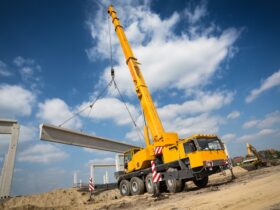With increasing awareness about sustainability, businesses are now rethinking how they approach renovations, especially when vacating or refitting commercial spaces. Known as commercial defits, this process involves stripping a property back to its original state before new tenants move in. While this might seem straightforward, balancing efficiency with environmental responsibility can make a significant difference.
Eco-friendly practices during commercial defits not only reduce environmental impact but can also lower costs and ensure compliance with local regulations in Australia. This approach requires careful planning, particularly in properly managing waste and recycling salvageable materials. By adopting sustainable methods, businesses contribute to a circular economy, a critical objective in tackling global environmental challenges.
If you’re planning a commercial defit project, understanding efficient and sustainable methods can help you save time, resources, and energy. Here’s a practical guide to get you started.
Planning an Eco-Friendly Defit
Every efficient commercial defit starts with a detailed plan. Before any tools are raised, evaluate the space and create a list of materials, furniture, and fixtures to be removed. Categorise these items into what can be reused, donated, recycled, or responsibly disposed of. This prioritised list allows businesses to divert as much as possible from landfill.
Specific regulations may apply across Australian states. For instance, waste classification and disposal guidelines in New South Wales may differ from those in Queensland or Victoria. Researching these rules ahead of time will prevent regulatory breaches and fines.
Time Management and Scheduling
Time is of the essence during any commercial defit, particularly in cases where lease agreements set strict deadlines. Developing a strict timeline ensures work is completed efficiently, minimising hold-ups that could incur additional costs. Taking the time to organise labour and logistics streamlines operations and avoids unnecessary waste.
Sustainable Waste Management
One of the most significant challenges in defits is managing demolitions without overwhelming waste systems. Around 20 million tonnes of construction and demolition waste is produced annually in Australia, with landfill taking the brunt of it. Here are some strategies to reduce waste while staying efficient:
- Deconstruction Over Demolition
Where possible, remove structures carefully to preserve reusable materials. Items such as timber, metal, and flooring can often be repurposed or sold to second-hand markets.
- On-Site Recycling_bins
Set up separate bins for materials such as metal, glass, and bricks. Many waste contractors in Australia offer recycling services tailored to construction and demolition sites.
- Donating Fixtures and Furniture
Items in good condition, such as doors, light fittings, or shelving, can be donated to charity organisations. Not only does this minimise waste, but it also benefits local communities.
Minimising Carbon Footprints
Apart from waste, commercial defits also have an indirect environmental cost through emissions generated by transport and energy consumption. To keep your project as eco-friendly as possible, consider the following practices:
- Using Energy-Efficient Tools: Opt for equipment that consumes less energy and operates more effectively.
- Transport Reduction: Consolidate waste collections to minimise the number of trips made to disposal facilities.
Compliance Issues
Adhering to health, safety, and environmental standards is vital in Australia. Keep up-to-date with hazardous material removal guidelines, particularly for asbestos—a recurring issue in older commercial properties. Enlisting licensed professionals ensures compliance with safety regulations and protects workers and tenants from exposure risks.
Final Clean-Up
The final stage of any commercial defit involves cleaning the space to prepare it for its next chapter. This includes removing debris, vacuuming, and ensuring the site is handed over in pristine condition. Wherever possible, use eco-friendly cleaning products to limit environmental harm.
Setting New Standards for Future Projects
Efficient and sustainable commercial defits are not just about cost-saving; they play an integral role in reducing the environmental impact of development projects across Australia. By planning meticulously, managing waste responsibly, and focusing on low-emission practices, businesses can set a positive example and lead the way toward a more sustainable future.







